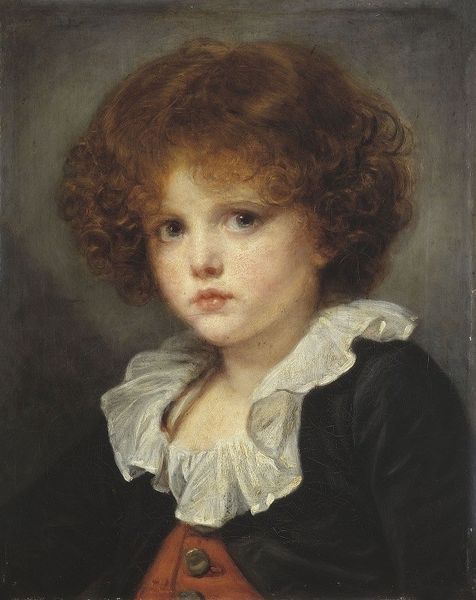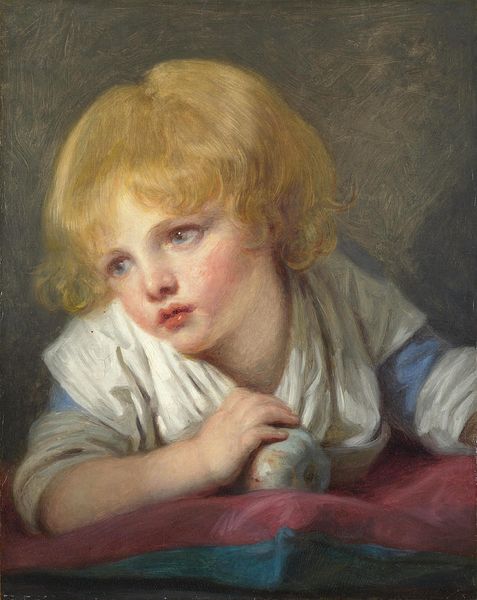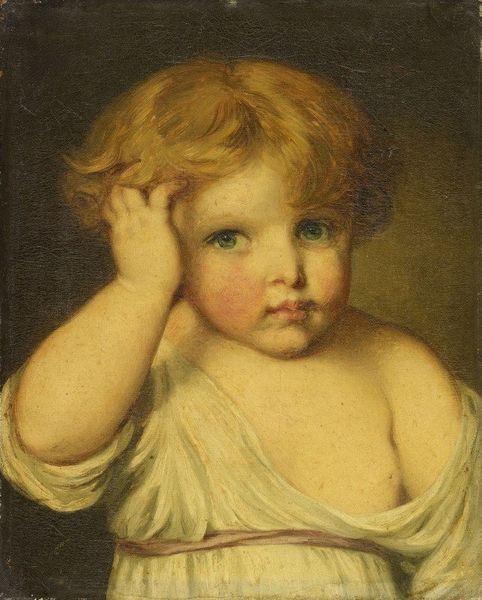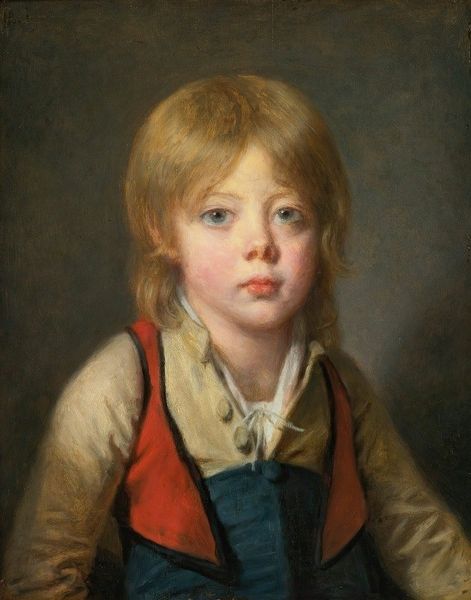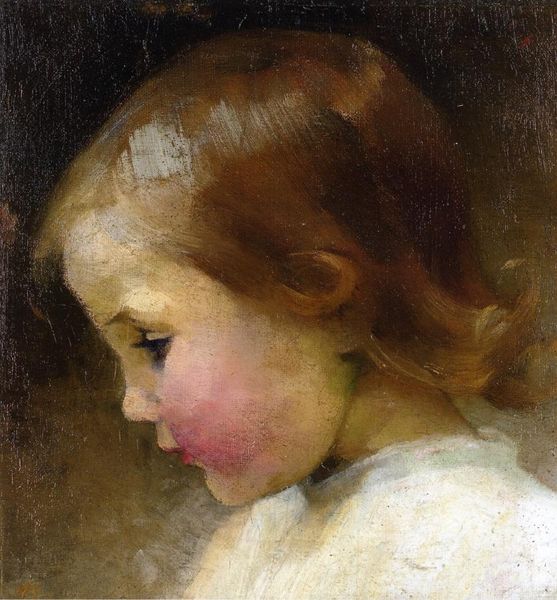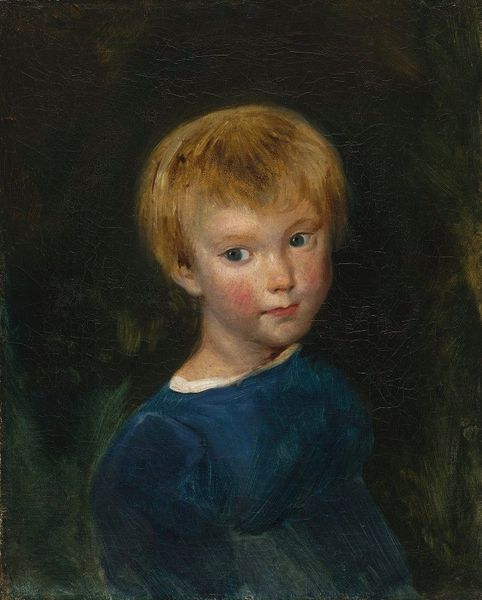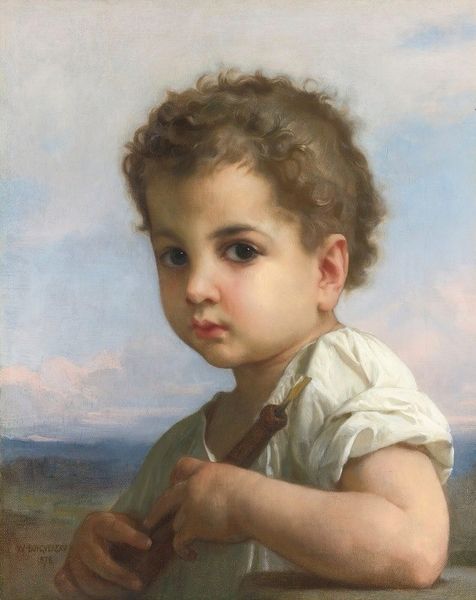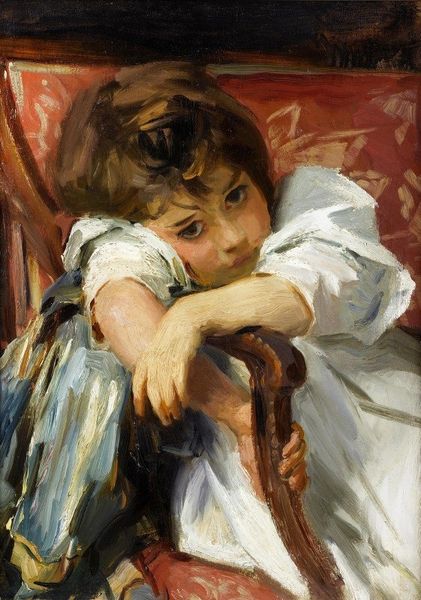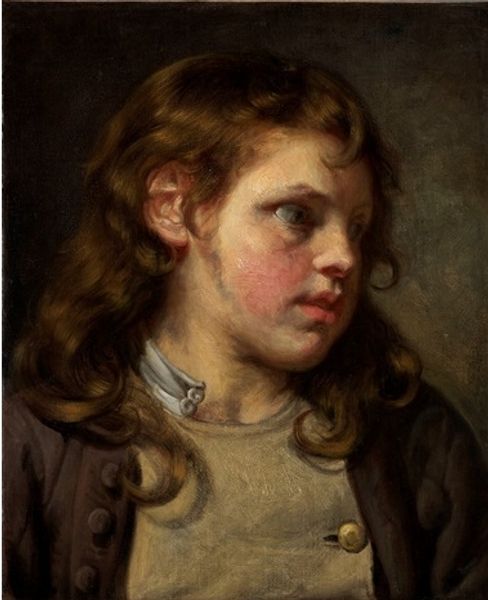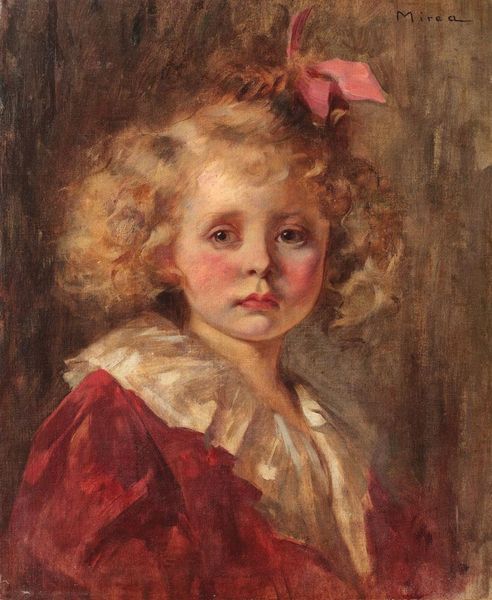
painting, oil-paint
#
portrait
#
portrait
#
painting
#
oil-paint
#
genre-painting
#
rococo
Copyright: Public Domain: Artvee
Editor: We're looking at Jean-Baptiste Greuze's "Petit Garçon blond à la chemise ouverte," made around 1760 with oil paint. The rosy cheeks and partially unbuttoned shirt give the painting a very intimate feel. What stands out to you when you look at it? Curator: Immediately, I consider the pigments used and how they were sourced. Ultramarine, for instance, ground from lapis lazuli, would have been a luxury, signifying patronage and social status, even in small details like this boy's dark blue smock. What story does the materiality tell us about the conditions of production and the society that commissioned this work? Editor: So you’re saying that the choice of materials reflects the social hierarchy? That the ultramarine detail, humble as it looks, tells a story about labor and access? Curator: Precisely. Also, note the smooth application of the paint to depict skin versus the looser brushwork for the clothing. What does this differential in technique suggest about value judgments – what elements the artist deemed more ‘worthy’ of refinement? Consider who would have worn this style of dress, and for what occasions. Editor: Hmm, it wasn't necessarily common, right? So how was the making of portraits like these shaping the status or image of particular people? Curator: Indeed. The artist's hand, combined with the availability and cost of pigments, literally shaped how this boy and perhaps childhood itself, was presented and consumed. By looking at the materiality, we can examine the social and economic factors embedded in the art-making process. Editor: That is such a great point! I never thought about portraits of everyday children through the lens of how the materials themselves were shaping the narrative. Curator: Exactly. And thinking about these things gives us a new perspective into rococo style and painting in that period.
Comments
No comments
Be the first to comment and join the conversation on the ultimate creative platform.
